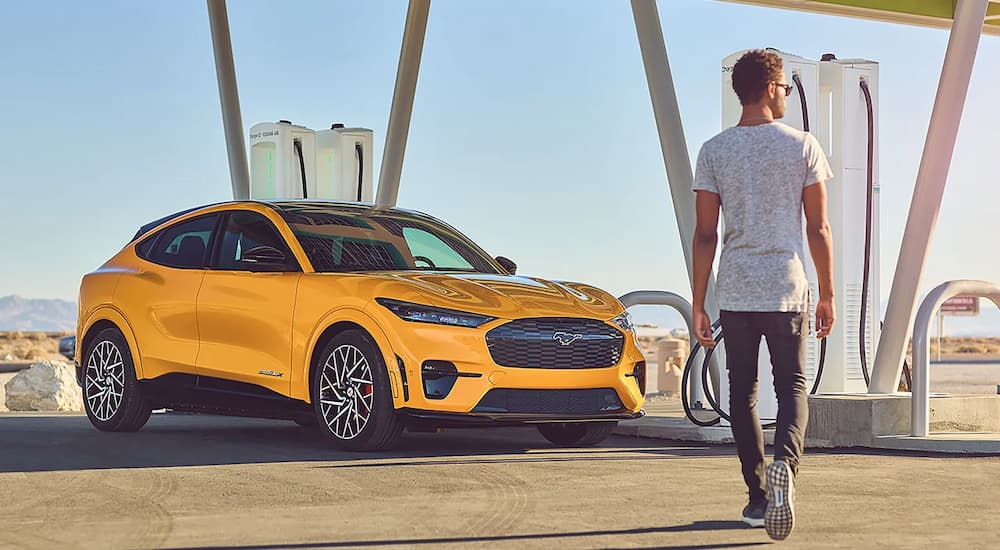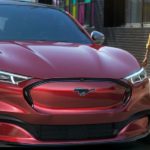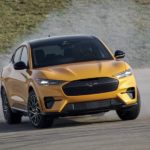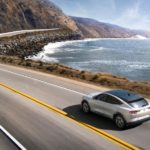When they first hit the scene, electric vehicles were seen as a sustainable, if boring, alternative to their gas-powered forerunners. Emphasizing efficiency and practicality over performance and style, early electric vehicles were popular amongst their target audience, but the general driving populace was somewhat skeptical. In part, this lack of interest can be attributed to the design of early EVs, which took on a decidedly more compact and inoffensive shape than many vehicles on the market in order to improve range through aerodynamics. Then there’s the issue of performance. While most early EV owners were happy to sacrifice speed in the name of fuel economy, the general public was not.
That’s all changed in the last decade as EVs came into their own. Today almost every major auto manufacturer produces at least one electric model, and they’ve come a long way from the early wedge-shaped models of old. Recognizing the role of EVs in the future of the industry, automakers have put a renewed focus on the design and performance of their all-electric options, and few models showcase that new approach quite as well as the Ford Mustang Mach-E. Before you make tracks for your local Ford Mach-E dealer, let’s take this opportunity to compare this EV with another of the industry’s most popular electric models, the Tesla Model Y.
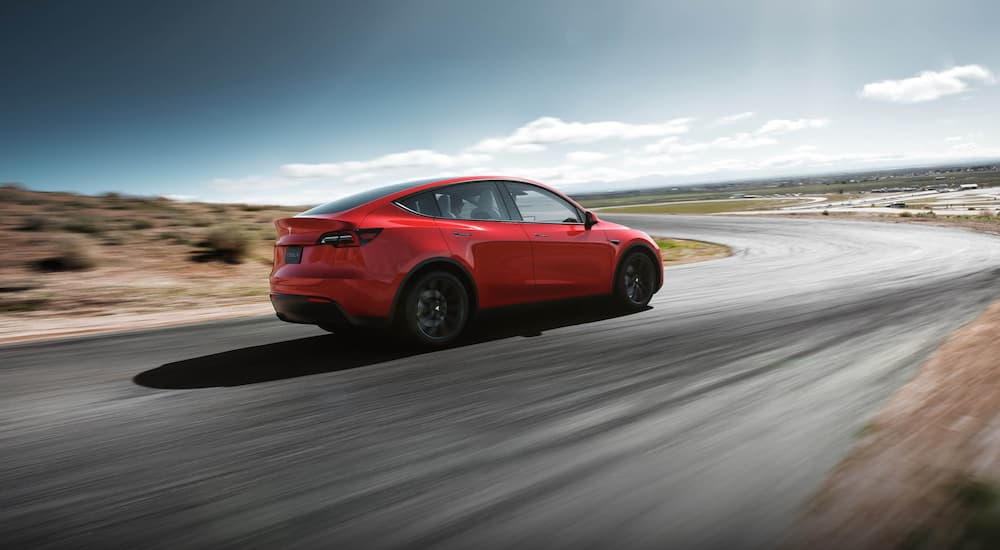
Thrilling Performance
Let’s start with a category that truly separates the Mach-E and Model Y from much of the EV competition: performance. Both models were designed with speed in mind, and they don’t disappoint, with the Mach-E and Model Y boasting zero-to-60 times of just 3.5 seconds in their top trims. Both vehicles offer lightning-fast acceleration thanks to their all-electric powertrains, which provide near-instant torque that’ll have you firmly plastered to the driver’s seat.
The entry-level rear-wheel drive version of the 2022 Mach-E is equipped with 266 hp from the standard 70 kWh battery, or 290 hp with the available 91 kWh extended range battery pack. However, you can opt for a dual-motor all-wheel drive setup that offers 266 hp with the standard range battery but rises to 346 hp if you opt for the extended battery pack. While Tesla shies away from releasing precise horsepower, torque, or battery capacity specs, every Model Y comes standard with the same battery pack and dual-motor all-wheel drive. This makes shopping easier but significantly increases the starting price.
Drivers seeking a little extra power can spring for the two EVs’ top-of-the-line offerings: the Mach-E GT and the Model Y Performance. They’re not cheap, with both commanding a roughly $70,000 price tag, but it’s hard to put a price on this sort of power. The Mach-E GT produces 480 hp and 600 lb-ft from its trim-specific electric motors, and output can be boosted to 634 lb-ft of torque by opting for the available Performance Package. The Model Y Performance also amps up power over the base Model Y Long Range, but Tesla doesn’t publish the exact figures. Of course, pure power doesn’t always translate to the speedometer, and the Tesla does have the edge when it comes to top speed, maxing out at 155 mph compared to 124 mph for the Mach-E.
However, there is one area where Ford’s 100-plus years in the industry shine through when compared to its upstart competitor. The Mach-E delivers a more comfortable ride with better handling, though it does lack some of the customization options of the Tesla. Mach-E drivers can choose between three preset driving modes––Whisper, Engage, and Unbridled––at the touch of a button. In contrast, Tesla drivers can tweak the Model Y’s individual acceleration, steering, and braking settings to their hearts’ delight but have to dive into the infotainment system to do so.
Plenty of Range
One of the easiest ways to compare EVs comes down to their range. After all, it’s hard to appreciate the benefits of an all-electric vehicle when you’re constantly searching for the nearest charging station or waiting for your vehicle to top itself off. When it comes to driving range, it all depends on which model and battery setup you opt for. For example, a rear-wheel drive 2022 Mach-E equipped with the standard 70 kWh battery pack is rated for 247 miles between charges, though that drops to 224 miles for models equipped with all-wheel drive.
The Mach-E’s extended range 91 kWh battery offers significantly more travel time than the standard option, upping the range to 303 miles for RWD models and 277 miles for AWD versions. These figures are all well above the industry standard for the current generation of electric SUVs, which typically offer between 200 and 250 miles of range. As one might expect, the range falls off a bit when discussing the Performance edition Mach-E, but the high-performance variant is only available with the 91 kWh battery and still gives drivers a rated 270 miles of range.
Those seeking the best possible range should look into Ford’s Mach-E California Route 1 trim. Boasting the longest range of any current Ford EV, the 2022 Mach-E California Route 1 uses some software tweaks to give drivers 314 miles of range. That might sound like a negligible improvement over the extended-range RWD model, but that 314-mile figure only tells half the story. The AWD California Route 1 trim sees an even more significant range bump of 35 miles over the standard version, offering 312 miles of range.
The Tesla Model Y holds its own when compared to the Mach-E, but it comes at a premium. The standard 2022 Model Y Long Range lives up to its name and offers an impressive 330 miles of range, but with its $65,990 starting price, it costs a good $13,000 more than the Mach-E’s longest-range trim. If you want to pay nearly $1,000 for each additional mile of range, be our guest, but we’d much rather spend a little more time at the charging station. Like with the Mach-E GT, the high-speed Model Y Performance sacrifices some range for its acceleration, coming in at 303 miles. Again, not bad, but whether it’s worth the additional cost over the Mach-E is up to drivers to decide for themselves.
Cutting-Edge Features
Today’s electric vehicles are known for being equipped with a host of cutting-edge features, and the Mach-E and Model Y are no exception. First off, let’s start with what’s quickly become the newest arms race in terms of modern vehicle design: the dashboard touchscreen. These handy displays serve to control most of the vehicle’s internal functions, from climate controls and entertainment to navigation and backup cameras.
For its part, the Mach-E comes standard with a massive 15.5-inch touchscreen display that’s mounted vertically on the dashboard. Reminiscent of an iPad in terms of size and orientation, the interface should be familiar to any tech-savvy driver. The display runs off Ford’s new SYNC 4 infotainment platform and includes all the expected features, like wireless Android Auto and Apple CarPlay smartphone integration, over-the-air updates, and voice recognition. Still, it’s what the display doesn’t do that might be one of its most interesting aspects. Ford decided to buck the trend of going completely digital by including a physical volume knob. While this might not sound like a big deal, it can make all the difference when traveling at higher speeds. A touchscreen-based volume control might seem clever, but in reality, the inherent delay and need to navigate through menus to simply control the volume can be a bit onerous when also trying to pilot a vehicle down a busy highway.
This is a lesson that Tesla has failed to learn. One might write this off to the company’s newcomer status or the fact that the brand tends to attract a more tech-savvy set of drivers, but it’s a perfect example of the good old “they were so preoccupied with whether they could, they didn’t stop to think if they should.” The Model Y’s touchscreen is slightly smaller than the Mach-E’s at 15 inches, but its horizontal orientation can make it a little harder to manipulate from the driver’s position. The Model Y shares the Mach-E’s over-the-air updates, voice recognition, and wireless charging, but it lacks the smartphone connectivity that makes the Ford software feel so seamless. Instead, Tesla includes built-in apps like Netflix and YouTube, as well as a variety of music streaming apps. The lack of Android and Apple connectivity might not be a dealbreaker for all drivers, and while it’s easy enough to write it off as Tesla being Tesla, it’s the sort of trend-bucking that makes increasingly little sense in today’s tech landscape.
As far as the rest of the interior is concerned, the Mach-E and Model Y both include synthetic upholstery and generous seating in the front and rear rows. The Tesla comes with a little more in the way of cargo space, with 30.2 cu.ft. of storage behind the second row and 72.1 cu.ft. overall against the Mach-E’s 29.7 cu.ft. of trunk space and a maximum capacity of 59.7 cu.ft. Thanks to the all-electric powertrain, both models have ample space under the hood for a front trunk or “frunk,” and while we don’t love that particular portmanteau, we appreciate the convenience. The Model Y’s frunk adds 4.1 cu.ft. to the equation, but the Mach-E has the edge with 4.7 cu.ft. of additional storage. Even better: the Ford EV features a drain plug in the bottom of the frunk, allowing drivers to fill it with ice and use it as a massive cooler for tailgating, camping, or wherever else you might need a cold one.
The Mustang Spark
A decidedly 21st-century take on the world’s original pony car, the Mustang Mach-E proves just how well the automaker has managed to capture all the fun and style of the storied American muscle car. A quick test drive will prove that the Mach-E offers an exciting new alternative to some of the industry’s more stolid EV models, and while it does have some competition at the high-performance end of the market, there’s no beating the performance and price. The Mach-E stacks up well against the likes of the Model Y without taking the same toll on your wallet, which is an important consideration in today’s market.
It’s also important to weigh reliability when talking about newer vehicles. With over 100 years in the business, Ford has the reputation and institutional knowledge to back up an innovative EV like the Mach-E. That’s not to say that Tesla lacks these attributes, but as a relative upstart, the brand simply doesn’t have the established track record or dealership infrastructure of a name like Ford. In the end, it all comes down to what you’re looking for as a driver, but for those without a vested interest in either automaker, it sure seems like the Mach-E can give Tesla a run for its money.


